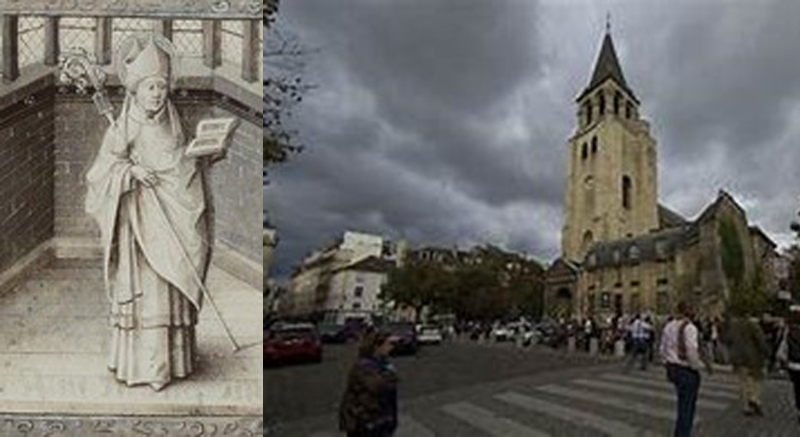(496-576)
St. Germain, Bishop of Paris, was born in Saône-et-Loire and studied at Avalon and also at Luzy under the guidance of his cousin Scapilion, a priest.
He was ordained at the age of 34 and became the Abbot of Saint-Symphorien near Autun. Germain was so famous for his generosity to the poor that his monks, fearing he would give away everything, rebelled.
In 555, with the unanimous consent of the clergy and people, he was consecrated to the See of Paris. In his new state the bishop continued to practice the virtues and austerities of his monastic life and labored hard to diminish the evils caused by the incessant wars and the license of the nobles. He attended the Third and Fourth Councils of Paris (557, 573) and also the Second Council of Tours (566). He persuaded king Childebert to stamp out the pagan practices still existing in Gaul and to forbid the excess that accompanied the celebration of most Christian festivals.
After a successful campaign in Spain in 540, the king fell gravely ill. He was miraculously healed by Germain, as is attested in the king’s letters-patent bestowing the lands of Celles on the church of Paris, in return for the favor he had received. In 588 Germain dedicated the then just completed St. Vincent’s church on Dec. 23, the very day the king died. Close by the church a monastery was erected. Its abbots had both spiritual and temporal jurisdiction over the suburbs of St. Germain till about the year 1670.
Childebert was succeeded by Clotaire, whose reign was short. At his death (561) the monarchy was divided among his four sons, Charibert becoming King of Paris. He was a vicious ruler and Germain was forced to excommunicate him in 568 for his immorality. Charibert died in 570. As his brothers quarreled over his possessions the bishop encountered great difficulties. He labored to establish peace, but with little success.
Germain died before peace was restored. His remains were interred in St. Symphorien’s chapel in the vestibule of St. Vincent’s church, but in 754 his relics were solemnly removed into the body of the church, in the presence of Pepin and his son, Charlemagne, then a child of seven. From that time the church became known as that of St. Germain-des-Prés.
Adapted by A.J. Valentini from: MacErlean, A. (1909). St. Germain. In The Catholic Encyclopedia. New York: Robert Appleton Company. Retrieved May 19, 2021 from New Advent: http://www.newadvent.org/cathen/06473a.htm
